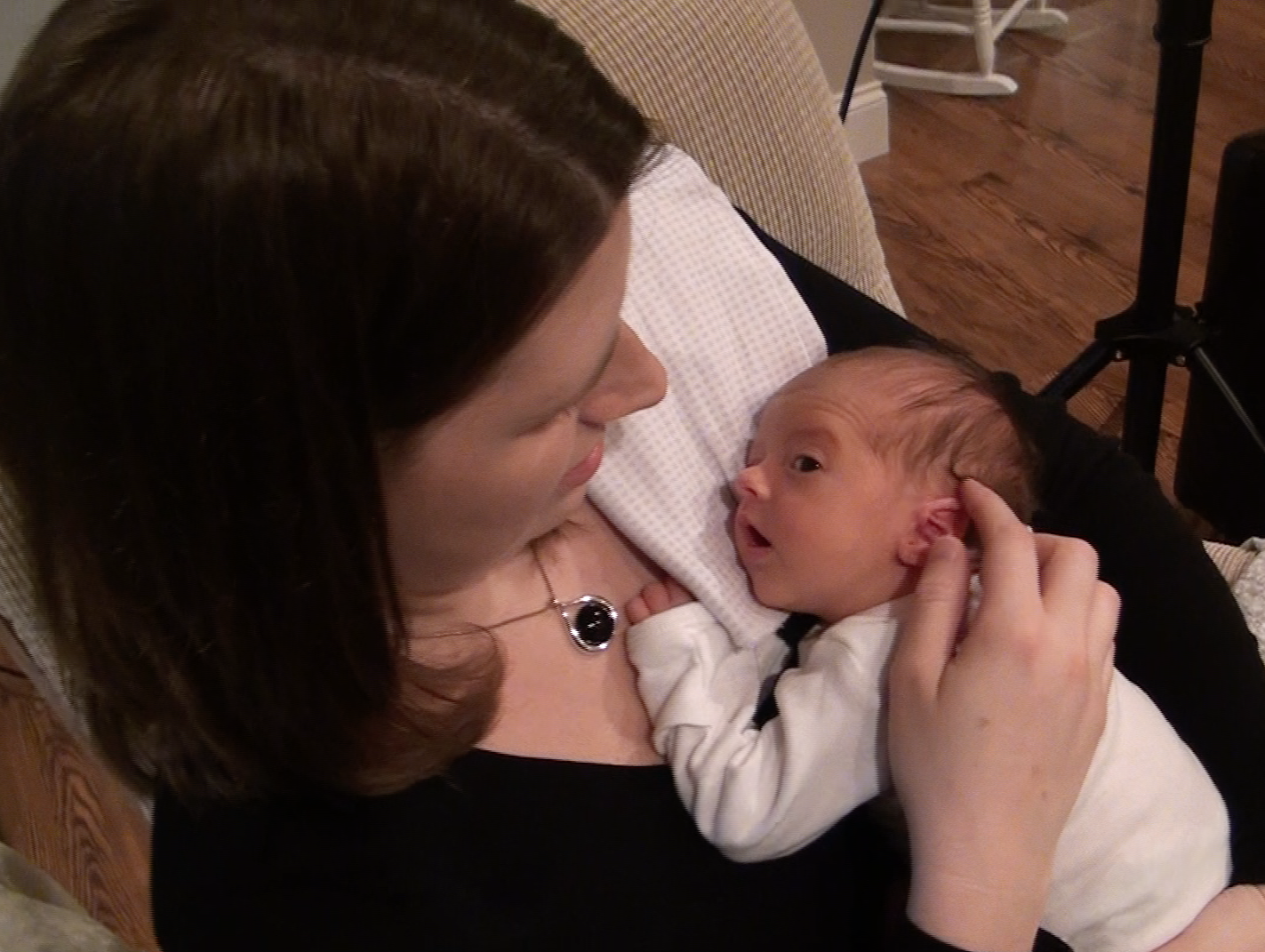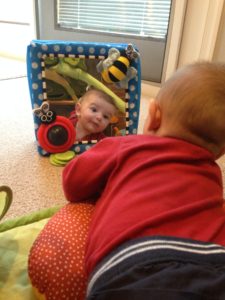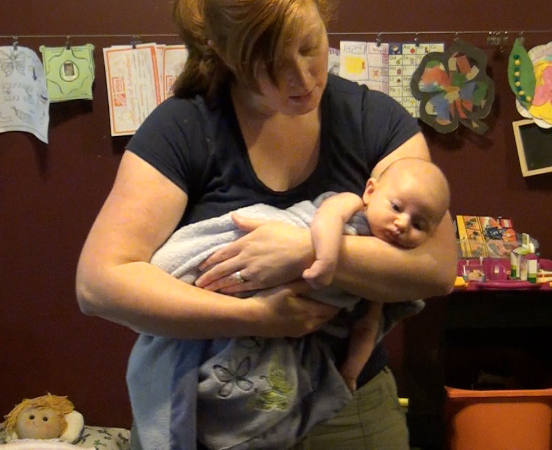
Babies are born with a well-developed sense of hearing. Did you know that the mechanisms for balance are housed in the inner ear, so the two senses are very closely related?
Anyone who has ever held or observed a baby knows that babies appear to be born with essentially no sense of balance. It develops significantly over that critical first year of development. The very first time your baby uses those tiny neck muscles and lifts her head the balance centers of her brain are activated. Balance is not just necessary for standing and walking. Crawling requires balance, rolling over, sitting, reaching for toys require balance; the simple task of holding our head at midline requires balance.
 Note I say that babies “appear” to be born without the sense of balance; however, at 21 weeks gestational age (that’s 23 weeks pregnant) the bones in the middle ear harden, fully developing the inner ear. Because balance is controlled from there, the fetus now has a sense of whether he is upside-down or right side up in the womb. The baby is just a little bit over one pound at this point, but he already have a sense of where his body is!
Note I say that babies “appear” to be born without the sense of balance; however, at 21 weeks gestational age (that’s 23 weeks pregnant) the bones in the middle ear harden, fully developing the inner ear. Because balance is controlled from there, the fetus now has a sense of whether he is upside-down or right side up in the womb. The baby is just a little bit over one pound at this point, but he already have a sense of where his body is!
To continue the development of balance and further improve that sense of where the body is in space (called proprioception) it is important to give your baby lots of experiences for those balance centers of the inner ear and brain to fire off, or activate.
This starts with supervised tummy time. Tummy time provides a great opportunity for your baby to lift her head and begin to develop the balance, strength, and coordination skills that future milestones will build on. Usually by three to four months babies are holding their heads up to 90 degrees while on their tummies and starting to push up on their forearms and lift their chest off the floor by four to five months of age. As they turn their heads side to side and take in their world, their sense of balance is assisting other important skills such as vision, perception, core strength, coordination, and motor skills, to name a few. It is incredible how many skills and milestones build on the sense of balance.

Some things you can do to help build your baby’s sense of balance are:
- Supervised tummy time (as mentioned above). This could be on the floor, a blanket, on the bed, across your lap, or your baby could lie on your chest while you lie on your back. Talk to your baby, encouraging him to lift his head and make eye contact with you.
- Provide movement by holding your baby and bouncing, rocking, or swinging her side to side.
- Remember the system for balance is housed in the inner ear, so opportunities to process music and sounds stimulate balance and balance activities help babies differentiate sounds and understand language.
References:
Aamodt, S. & Wang, S. (2011). Welcome to Your Child’s Brain: How the Mind Grows from Conception to College. Bloomsbury, NY.
Sasse, M. (2010). Active Baby, healthy Brain. The Experiment Publishing.

